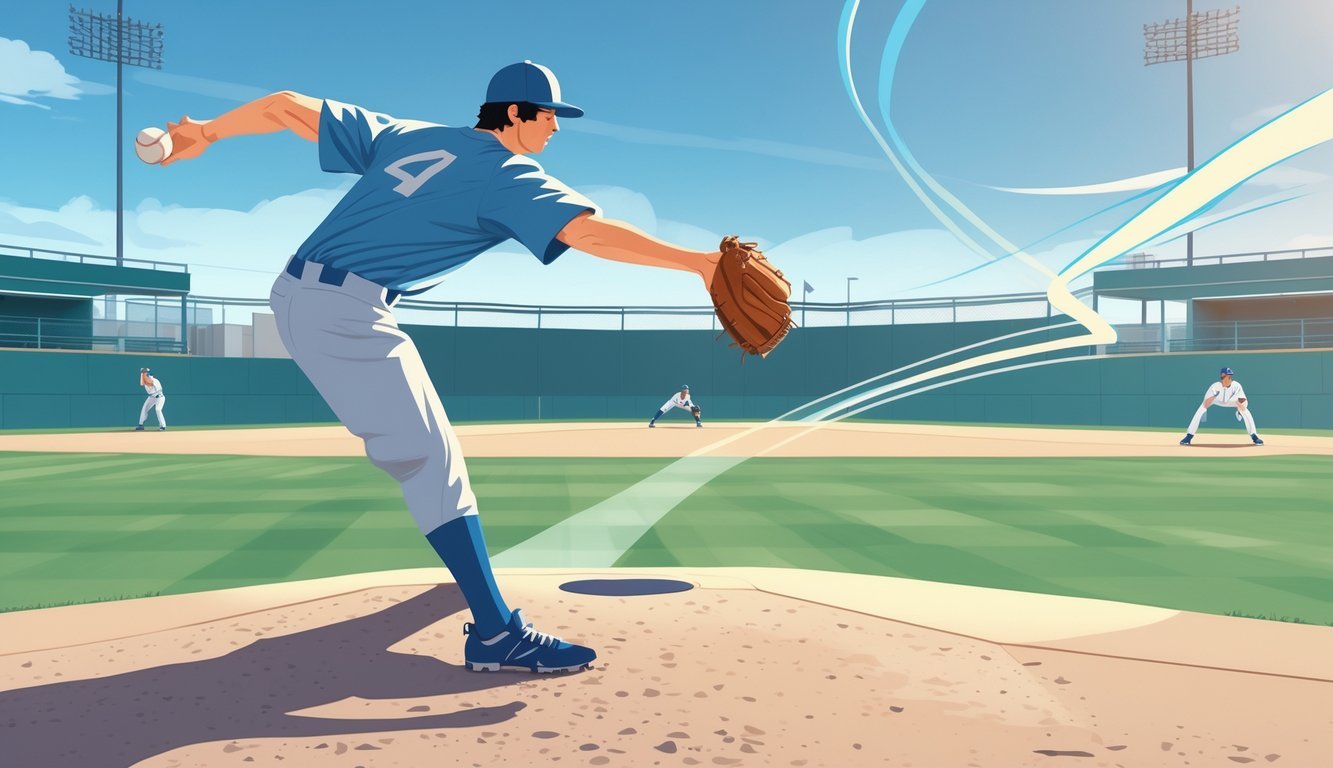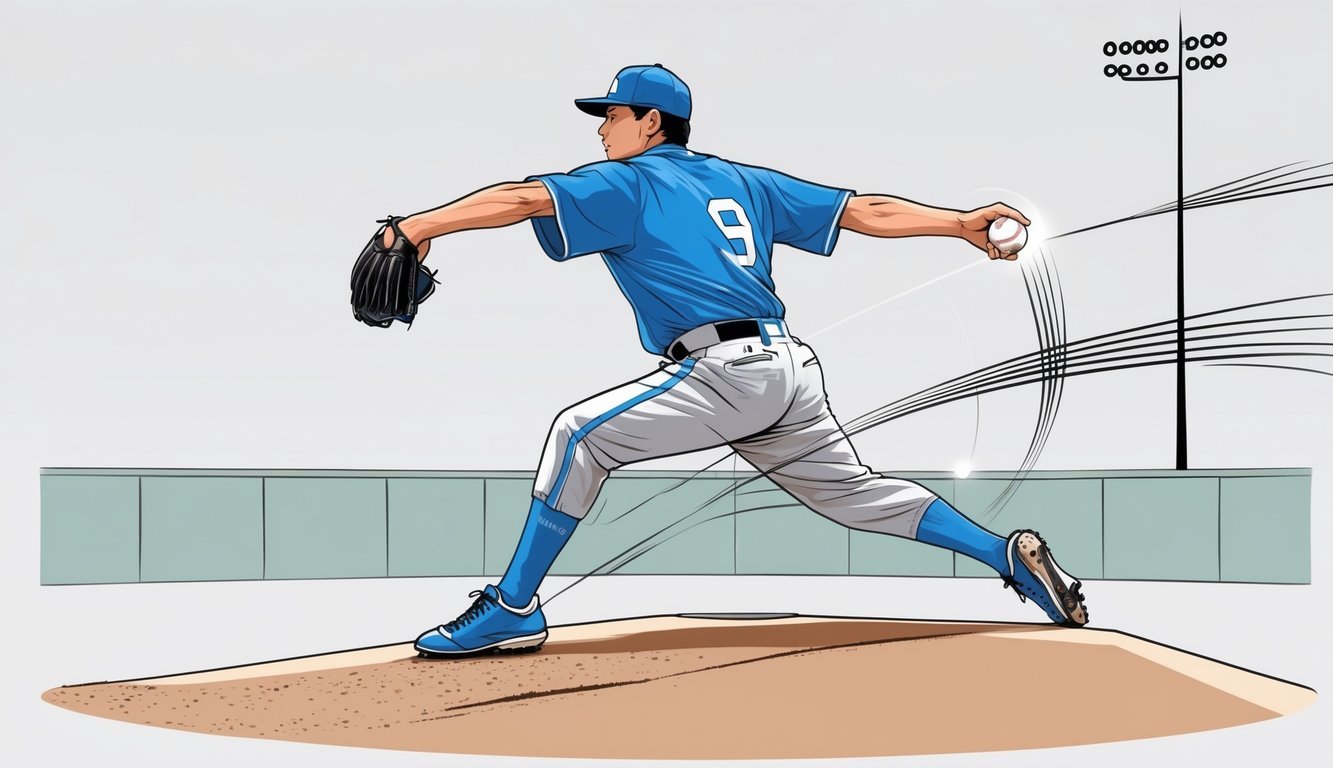PsychNewsDaily Publishers
100 Summit Drive
Burlington, MA, 01803
Telephone: (320) 349-2484
PsychNewsDaily Publishers
100 Summit Drive
Burlington, MA, 01803
Telephone: (320) 349-2484
A slider pitch is a fast, breaking baseball pitch that moves sideways and downward, effectively deceiving batters and enhancing a pitcher's arsenal.

A slider pitch is a type of baseball pitch that moves sideways and downward as it reaches the batter.
Pitchers throw it faster than a curveball, and it breaks sharply at the last second, which can totally fool the hitter. That’s why it’s such a handy weapon for pitchers who want to mix up speed and movement to get batters out.
You can picture a slider as landing right between a fastball and a curveball in terms of speed and motion.
The way a pitcher grips the ball and snaps their wrist makes it slide away from the hitter, which makes it tough to hit cleanly.
If you get how this pitch works, you’ll probably appreciate the skill it takes to throw a good one.
Learning about the slider pitch gives you a closer look at how pitchers control the game.
Whether you’re a regular baseball watcher or just curious about what makes a strikeout happen, knowing how a slider works helps you see the art behind the pitch.

The slider stands out because it tricks batters by moving differently from other pitches.
It combines speed with a sharp break, which makes it tough to hit.
You’ll see what makes the slider unique, how it’s different from other breaking balls, and a bit about where it came from.
A slider is a breaking pitch, so it moves as it gets close to the plate.
It usually travels between 80 and 90 mph, which puts it right between a fastball and a curveball in terms of speed.
What really sets it apart is the sharp sideways and downward “break.”
Pitchers create this movement by gripping the ball a certain way and snapping their wrist as they throw.
Unlike a curveball that drops a lot, the slider breaks less but gets there quicker.
Pitchers use the slider to hide the ball’s spin and mess with the hitter’s timing.
The spin is called a bullet spin because it’s tight and fast, and it helps the pitch dart away suddenly.
Some people call it a backdoor slider when it breaks into the strike zone from outside.
The slider falls between a fastball and curveball in both speed and movement.
Curveballs drop sharply, while sliders move more sideways and break faster.
There’s also the slurve, which blends the slider and curveball, moving both down and sideways but at a slower speed.
Compared to a sweeper or gyro slider, the traditional slider has less horizontal spin.
Sweepers move more smoothly across the plate, and gyro sliders spin kind of like a football.
If you want to understand how pitchers mess with batters, it helps to know these differences.
Pitchers have thrown sliders since the early 1900s, sometimes calling it the nickel curve because it was a smaller, sharper version of the curveball.
Guys like George Blaeholder and Bob Feller helped develop it early on.
Later, legends like Bob Gibson, Steve Carlton, and Randy Johnson made the slider famous.
These days, pitchers like Clayton Kershaw, Jacob deGrom, Shohei Ohtani, and Chris Sale throw nasty sliders with speed and precision.
Over the years, the slider turned from a simple breaking ball into a real weapon.
Pitchers keep tweaking it to make it harder to hit, which shows just how valuable the slider is in baseball.

Throwing a good slider depends on your grip, your wrist movement, where you release it, and how you practice.
Each part changes the spin, movement, and sharpness of the slider’s break.
If you pay attention to these details, you can throw a better pitch.
Your grip shapes how the slider moves.
Hold the ball with your middle finger across the seam, just off-center to create side spin.
Your index finger sits close to the middle finger but doesn’t press as hard.
The thumb goes underneath the ball, supporting it but not squeezing.
Press the ball lightly with your fingers, especially the middle one, to help create a sharper spin.
Don’t grip too tight, or you’ll lose both speed and control.
The ring finger doesn’t do much but can help steady the ball.
Finding the right finger pressure is key for both movement and control.
Your wrist action gives the slider its signature spin.
As you release, snap your wrist a bit, turning it toward your pitching arm’s side (that’s called supination).
This snap makes the ball rotate sideways and drop just a little.
The goal is to create a spin rate that makes the ball “slide” away from a fastball path.
A quick, controlled snap gives you a sharp break with about 10-15 inches of horizontal movement.
If you overdo the wrist motion, you’ll lose speed and control, but too little leaves the pitch flat.
Release the slider at pretty much the same spot as your fastball to hide the pitch.
Keep your arm angle or arm slot steady.
Your arm speed should look the same from windup to release so you don’t tip off the hitter.
Most pitchers let go of the slider just a bit later than a fastball to add movement.
Try aiming the slider toward your glove side to get that sideways break.
Your release point changes the direction and sharpness of the break.
Staying consistent here helps with accuracy and makes it tougher for batters to guess what’s coming.
Practice helps you control the slider’s speed, location, and break.
Work on your grip and wrist snap every bullpen session.
Use drills to build up your spin rate and arm speed.
Focus on aiming the pitch inside or outside based on the batter’s stance, and just keep practicing location.
If you’re a youth pitcher, don’t throw the slider too much—it takes good technique to avoid injury.
Record your throws and look at your release point and wrist action to spot what you can fix.
Control comes from repetition and making small adjustments over time.

A slider stands out because of how it moves and the way pitchers throw it.
Its break, speed, and grip make it different from other pitches and tough for batters to hit.
A slider usually moves more sideways and breaks sharper and later.
Curveballs drop more straight down, with a slower speed and a bigger, sweeping motion.
The slider has strong horizontal movement and sweeps toward the glove side.
It drops a bit—usually around 10 to 15 inches—but the main action is side to side.
The slider’s sharp, late break can throw off batters’ timing and make the ball hard to track.
Its speed sits between a curveball and a fastball, which adds to the challenge.
A cutter moves less than a slider and breaks in a tighter, more subtle way.
The cutter usually stays closer to fastball speed but shifts just slightly toward the glove side.
Plenty of great pitchers have made their name with the slider, like Randy Johnson and Madison Bumgarner.
These pitchers use the slider to rack up strikes and get swings and misses.
Pitchers usually turn to sliders when they want batters to chase or miss.
They like using sliders to finish off hitters, especially when a strikeout really matters.